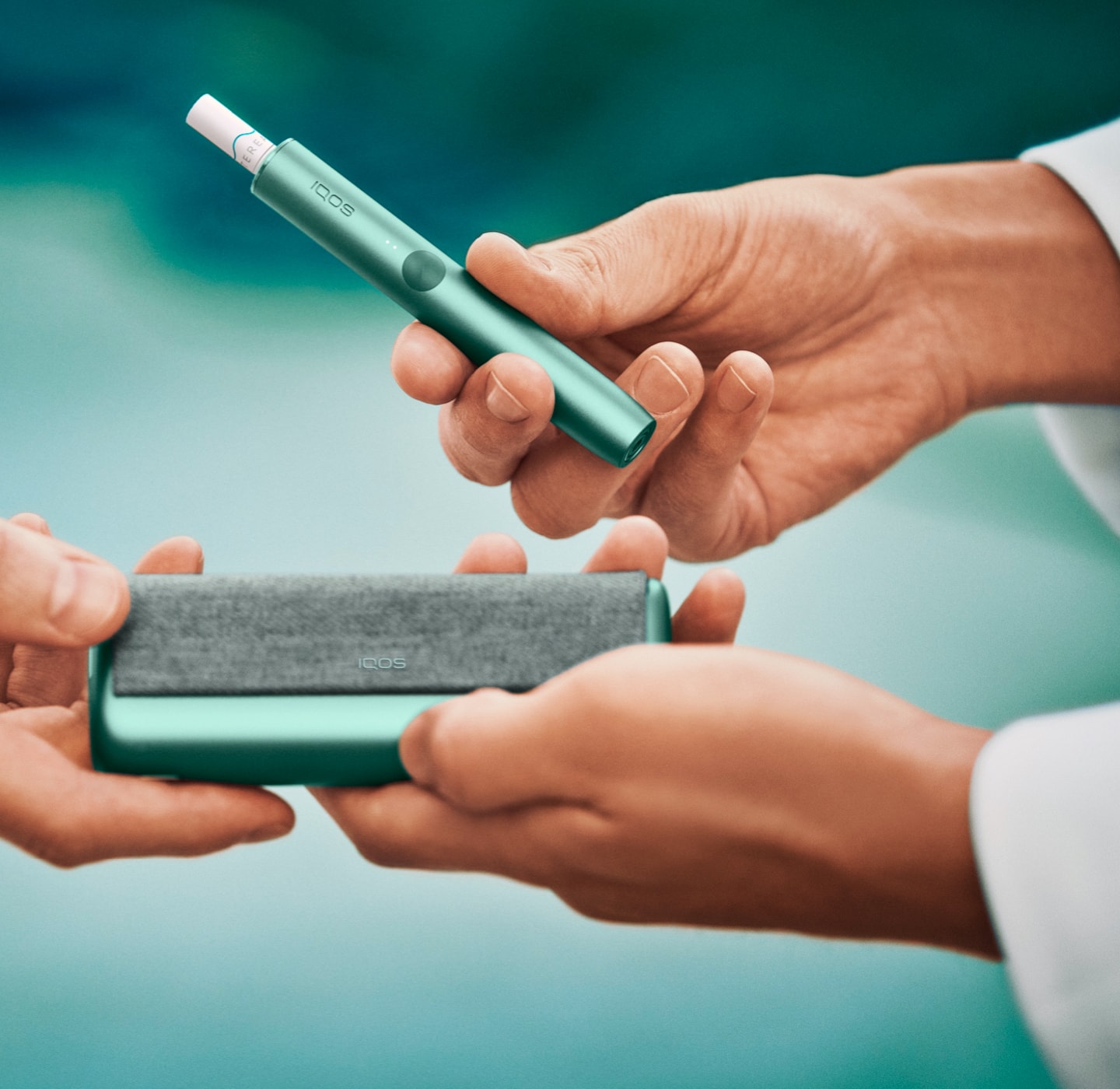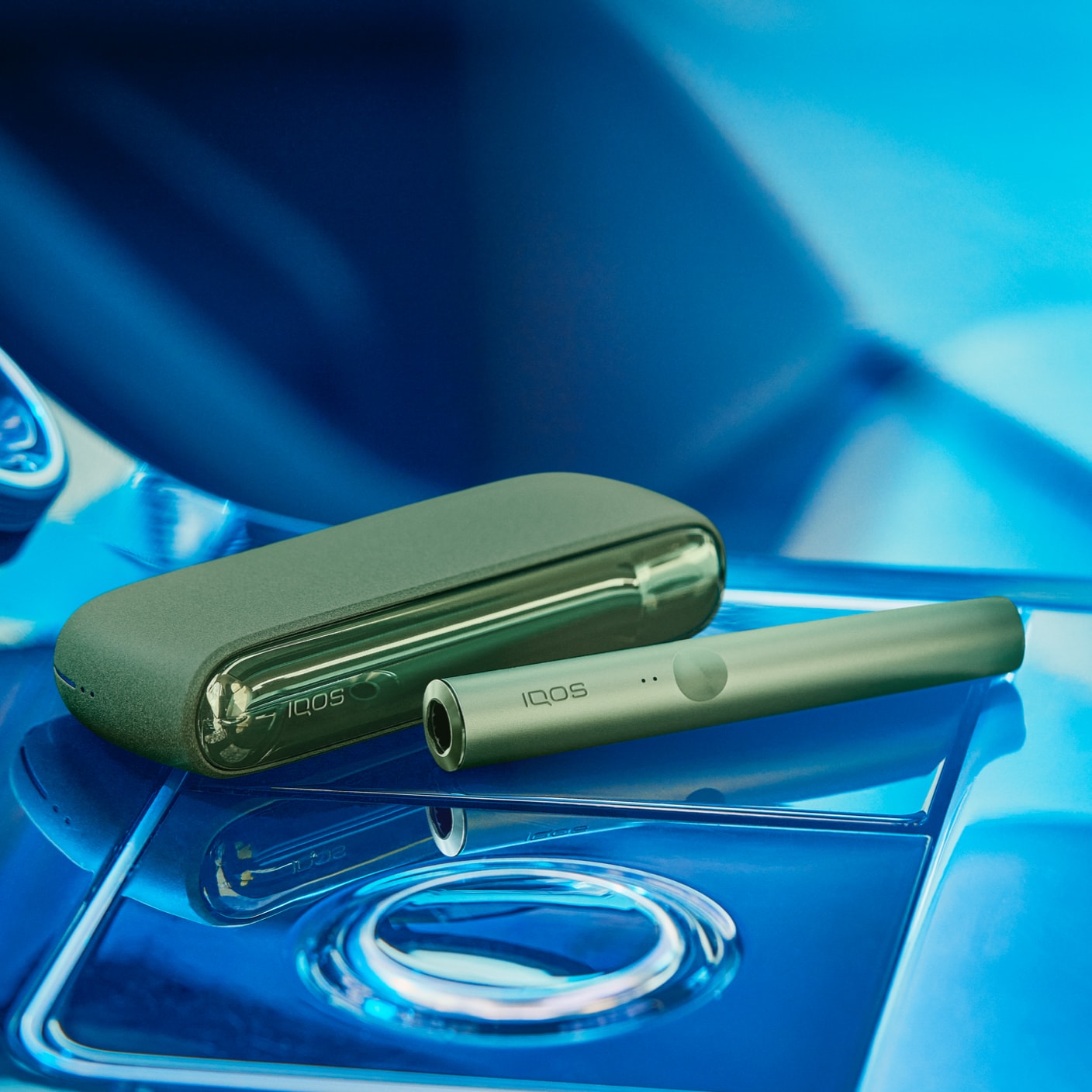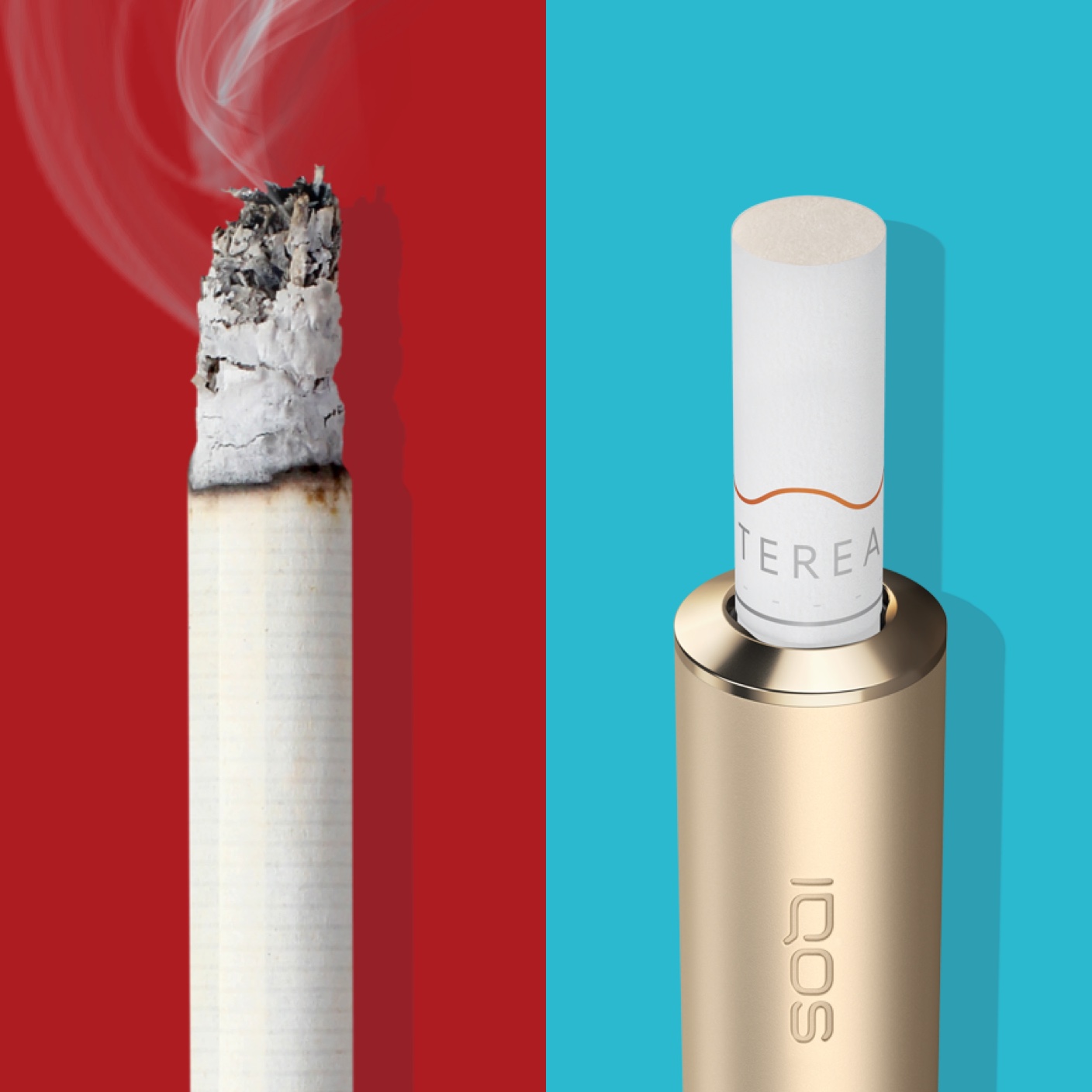
The science behind IQOS Heated Tobacco.
IQOS is the combination between science,
technology and vision.
IMPORTANT INFORMATION: It does not necessarily equal a 95% reduction in risk. IQOS is not risk-free
*“95% less” represents the average reduction in levels of the 9 chemicals recommended for reduction in cigarette smoke by the World Health Organization, which do not include nicotine. See Important Information here

Science behind
heated tobacco
We believe in science. We believe it can change the lives of millions of smokers, who would otherwise continue to smoke.
To this effect, we recruited scientists to work on an important idea: developing less harmful products that cigarette smokers can switch to if they don’t quit. Hundreds of scientists and engineers at PMI’s global Research and Development centres in Switzerland and Singapore have developed and evaluated IQOS, an innovative electronic device that heats and not burns tobacco. When paired with the tobacco stick, it emits a vapour to deliver nicotine and real tobacco taste.
Tested to the highest standards.
IQOS has gone through robust scientific assessments, including, to-date, 18 non-clinical and 10 clinical studies involving thousands of participants.
The totality of evidence available shows that, while IQOS use is not risk-free, switching completely to IQOS is a better choice to your health than continued smoking.*
Why heating is better than burning.
Technology – the world revolves around it. Over the years, it has radically changed our lives for the better. The way we work, the way we communicate, the way we travel. By combining science and technology, we have developed a less harmful alternative to continued smoking. IQOS is changing for the better the way adult smokers, who would otherwise continue to smoke, can experience tobacco.
IQOS heats tobacco instead of burning it for a simple reason: the burning of tobacco emits high amounts of harmful chemicals like carbon monoxide.
IQOS ILUMA SMARTCORE INDUCTION™ technology and IQOS HeatControl™ technology prevent tobacco from burning, which means they significantly reduce the number and level of harmful chemicals emitted compared to cigarette smoke*.
Heating technology.
Cigarettes burn tobacco, reaching high temperatures, and producing ash, tar, and smoke with high number and levels of harmful chemicals. Cigarette smoke is a complex mixture of over 6000 chemical substances, around 100 of which have been linked to smoking-related diseases by public health authorities.
IQOS ILUMA SMARTCORE INDUCTION SYSTEM™ technology and IQOS HeatControl™ technology heat tobacco to a lower temperature, ensuring that combustion does not occur. Because there is no combustion, IQOS does not produce smoke. It generates a tobacco vapour that brings you a high-quality tobacco taste experience with 95% less harmful chemicals compared to cigarettes*.
Cigarettes produce tar, IQOS doesn't.
IQOS does not produce tar because it heats tobacco instead of burning it. It generates an aerosol residue that is fundamentally different from tar and consists of significantly lower levels of harmful chemicals.**
IMPORTANT INFORMATION: The absence of tar does not mean that IQOS is risk free. IQOS ILUMA provides nicotine, which is addictive.
**Average reductions in levels of a range of harmful chemicals (excluding nicotine) compared to cigarette smoke.
Vapour vs cigarette smoke.
IQOS emits a tobacco vapour that is less harmful than cigarette smoke. To demonstrate this, we conducted a comprehensive assessment program that included 10 clinical studies on aerosol chemistry (as well as data from 18 non-clinical studies), and involved thousands of participants in the US, Japan, UK and Poland. Evidence demonstrates that switching completely to IQOS, while not risk-free, is less harmful than continuing to smoke.*

IQOS emits less harmful chemicals than cigarettes.
Cigarettes burn tobacco, which produces high amounts of carbon monoxide.
IQOS ILUMA doesn’t burn tobacco, producing on average 98% less carbon monoxide (CO) and significantly lower levels of other harmful chemicals compared to cigarettes.^

IQOS doesn’t produce smoke or second-hand smoke.
Cigarettes emit smoke that lingers on you while it bothers the people you are around you. IQOS heats tobacco instead of burning it, producing no smoke smell on your hands, hair, clothes or furniture. The tobacco vapour that IQOS produces, contains significantly less harmful chemicals*, resulting in less impact on the air around you and others compared to cigarette smoke.
Switching to IQOS.
Our studies show that the satisfaction of those who switched completely to IQOS is comparable to that of those who continued to smoke cigarettes.^ Discover more about our scientific assessment journey or read about the benefits of switching from cigarettes.
IMPORTANT INFORMATION: This does not mean a 98% reduction in risk, and carbon monoxide is only one of many harmful chemicals in cigarette smoke. IQOS is not risk free, and provides nicotine which is addictive.
^We measured the levels of certain harmful chemicals prioritized for reporting by renowned public health organizations, and these are reduced on average by 95% compared to the smoke of a cigarette (nicotine excluded).
^^3-month clinical study conducted in US and Japan with 160 adult smokers each, under near real-world conditions.


v_2?qlt=85&ts=1744632660270&dpr=off)











